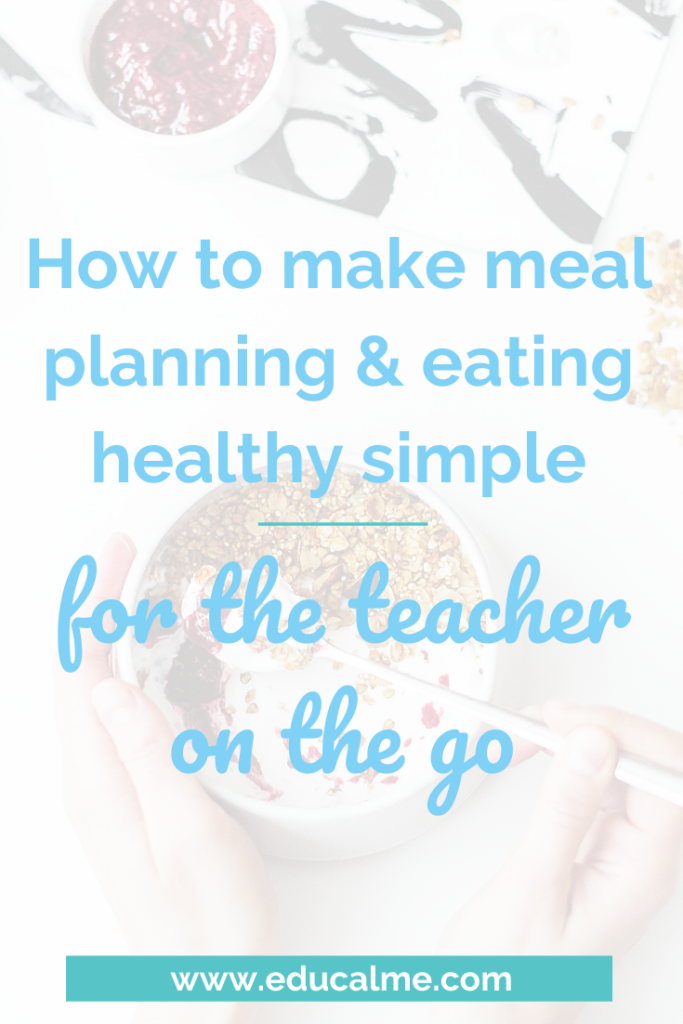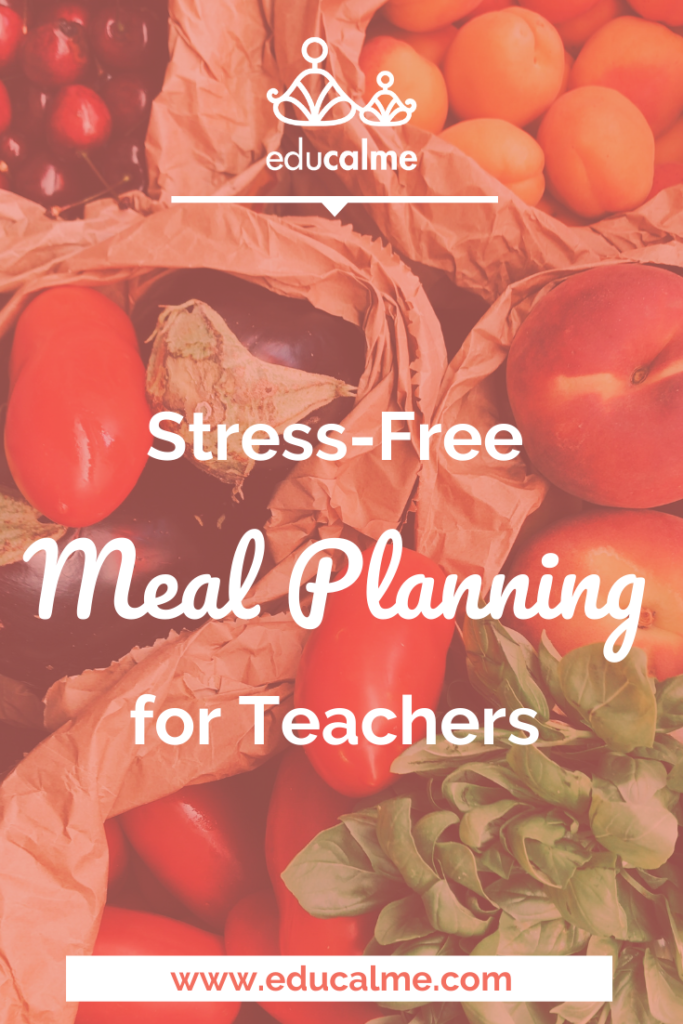
On the heels of report cards and parent-teacher conferences, one of the busiest times of the year for us teachers, I thought I would write this post for all the people that I spend most of my days with. A typical day for any teacher could include a wide range of tasks and responsibilities. When we get home from work, we. are. spent. (and still thinking about school until we go back the next day.) Teaching isn’t one of those jobs that just ends when we leave the building. So, as we try to manage all the tasks and responsibilities of work life, home life may sometimes take a backseat.
Finding balance can be a challenge. While our home lives and school lives can be often unpredictable, taking control of the predictable aspects, like preparing and eating food to sustain ourselves will help reduce some of our daily stress.
At school, we know that there will be students and that we will most likely teach something. That is predictable. At home, we know that there are humans that need to be fed, and we will most likely feed them something. In the same way that we wouldn’t go in to work without, at the bare minimum, a plan of how we would like our day to go, it’s helpful to treat meal planning for our families the same way.
Just how we would have a plan for how we’d like our school day to go, having a meal plan for how we’d like our meals to go is the equivalent. Creating a 5-day plan allows for flexibility on the weekends. Being flexible and open to changing the game plan helps. Stocking your pantry with essentials that will allow you to pull together a healthy meal, is your back-up plan. Should your schedule or meal-time plans change at the last minute, you’ll be in a better position to adapt and change the plan.
Following your schedule when planning your classes just makes sense. You wouldn’t plan your French lesson for your Spanish class, just like you wouldn’t roast a chicken for dinner when you know you have to drive your kids to their music lesson twenty minutes after you get home. Applying this principle to your family meal plan works just the same. During the week, I generally won’t make a meal if it takes longer than 30 minutes to make.
If we have meetings or activities that will impede my cooking time, I make something in the slow cooker before I leave for work in the morning. Green chili and Minestrone Soup are some of our favorites. If we are rushing in from work, then rushing out again to an activity, I’ll make something the night before like a salad or a grain bowl, which can also travel well if you have to eat on the go. Other quick options are breakfast foods! They too are portable and cook up quickly. Try a breakfast bagel, burrito or mini quiche. Burritos and mini quiche can be made in large quantities on the weekend and frozen for whenever you need a healthy lunch or dinner.
This tip is specific to teachers who also have children at home. When lesson planning, it’s important to consider your audience and each student’s individual needs. Accommodating special needs and encouraging students to push their limits and step slightly outside their comfort zones come with the territory. Factoring these variables into your plan mirrors what meal time with your kids might look like. Everyone has different tastes and let’s be honest, some of our kids “don’t like” (insert any food you just prepared).
Making sure that there is at least one item on the table that everybody likes, will prevent you from becoming a short-order cook and will encourage your kids to try new foods that they currently “don’t like”. What this looks like in my house is a plate of raw veggies at every meal. In another family, it may be a glass of milk or a piece of bread. When kids know that they have to eat off the menu, they choose what they like and if they’re hungry, they’ll try more than just what they like. If they know we’ll go to the kitchen and make them a different meal, they will wait. us. out until we do.
It’s no secret that some teachers would rather go into work sick, than prepare for a substitute teacher. It’s so time-consuming and the end result may not what you had in the plan. When you are the primary cook at home, planning for a sub for when you’re not there can be helpful. If Dad or Grandma is your usual stand-in, a simple conversation about what is on the menu and where to find the food might be sufficient. If it’s the new babysitter, maybe more detailed instructions or a simplified dinner option is the route to take. Either way, being flexible and willing to adapt is key to reducing stress in meal planning for your family and in teaching.
Meal planning is one aspect of our lives that we can 100% control. Letting go of that control means more variables, which means more unpredictability and more stress. You do this every day in your job, you can do this every day at home. You got this!!
Be sure to subscribe to the Balanced Educator Podcast so you don’t miss our upcoming episodes as we continue to teach how to avoid teacher burnout. iTunes, Spotify, Google Play
Learn more about easy meal planning and get in touch with Shawna: www.toobusylivin.com
Check out Shawna’s blog post about this episode & more: https://toobusylivin.com/?p=1403
Share this post on Pinterest so other educators can learn concrete strategies to form healthy habits this school year.

Let us know in the comments, how will you implement what you learned today in your meal-planning?
A special thanks to our sponsor: